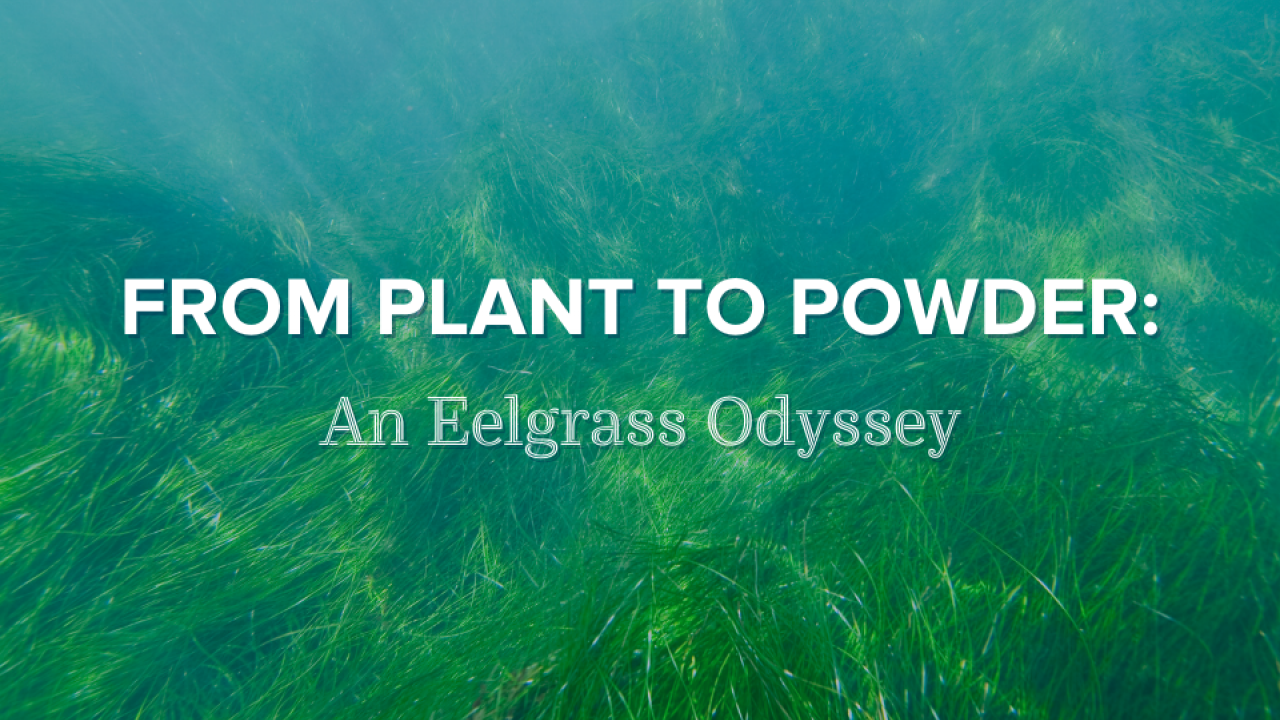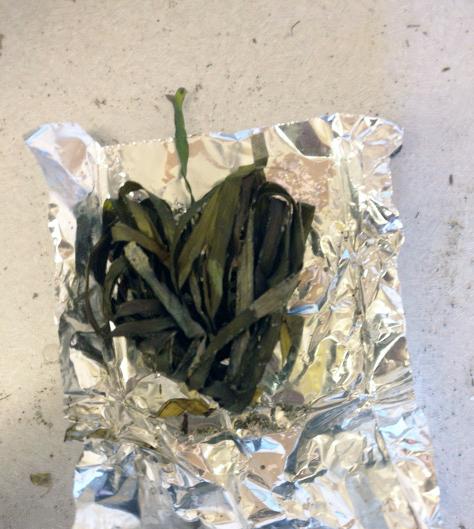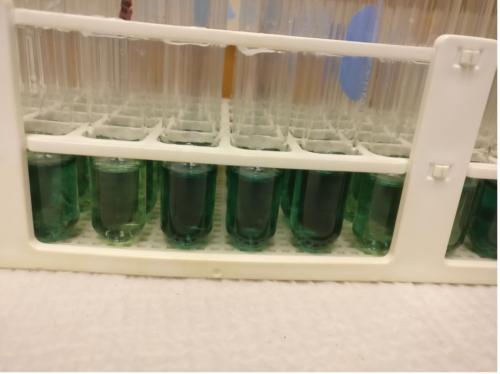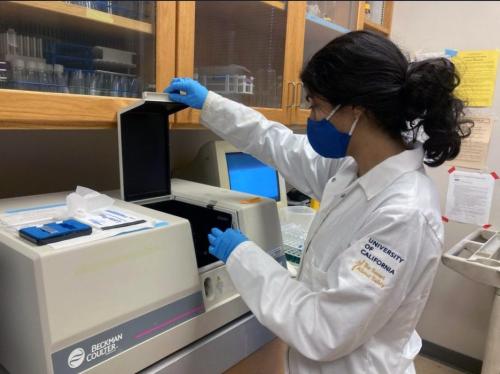
From Plant to Powder: An Eelgrass Odyssey
From Plant to Powder: An Eelgrass Odyssey

“They are so green!” Dr. Katie DuBois exclaimed as I held the fluorescent green test tube in my hand. The contents of this test tube may look like some vile concoction from a mad science lab, but they are in fact the remnants of a marine plant called eelgrass, Zostera marina.
The Eelgrass Way of Life
Zostera marina is a species of seagrass that is widely recognized by marine ecologists to provide nursery habitat. Its thin, long foliage provides a protective canopy to a wide variety of marine species including dungeness crab, clam, juvenile rockfish, and surfperch. Staring into the depths of one of several mesocosms at the Bodega Marine Laboratory, one can’t help but become mesmerized by the swaying, seemingly neon blades of grass harboring a plethora of equally bright green Phyllaplysia (adorable sea hares that are commonly found in eelgrass) and polka-dotted bubble snail casings.

Plant Physiology and Ocean Warming
With the threat of ocean warming, how will this impact eelgrass populations that provide so much diversity to the subtidal? Plant physiology may be key to answering this question. The Stachowicz Lab at the Bodega Marine Laboratory is studying functional traits in eelgrass plants to determine how populations from different temperatures respond to simulated ocean warming conditions. Tomales Bay, California is an ideal climate change simulator, as cool ocean water is found at its entrance, and becomes significantly warmer as water travels further into the bay.

From Plant to Powder
Dr. DuBois, with a team of Stachowicz Lab researchers, transplanted two populations of eelgrasses from the wild into six mesocosms, (specialized treatment tanks used to manipulate water temperatures) at the Bodega Marine Lab. One from a warmer, inner bay location, and one from the cooler entrance of the bay. Dr. DuBois and I measured the growth rates and biomasses of all three hundred and fifty of these plants. Since the outermost leaves of eelgrass represent the oldest growth of the plant and the innermost leaves the newest, we collected the third leaves of each plant to standardize their age to measure their biochemical composition.

Uncovering Photosynthetic Secrets
I pulverized these third leaf samples into a thin powder to use in a chemical reaction to indicate how much starch and sucrose is in each plant. Sucrose is among the first products of photosynthesis, the process by which plants convert sunlight into energy. Plants use starch as long or short term storage for energy, and sucrose for storage with immediate energy availability. Sucrose is of particular interest in this experiment because, should the plant experience more stress due to our warming oceans, there would be a need for immediate energy availability, and consequently more of the products of photosynthesis would be found in sucrose rather than starch.
In order to measure the amount of sucrose and starch present in each individual plant, I first stripped the sucrose and starch from the plant leaf powder using ethanol and sodium hydroxide respectively. Then in a colorimetric reaction using a spectrophotometer, I used the color of the sample, ranging from dark to light green to determine the concentration of starch and sucrose. The deeper the green, the more sucrose present, and therefore more stress the plant is under.
What’s Next
The Stachowicz lab hopes to use these data on functional traits in combination with the genome of each plant in order to translate eelgrass’ genome. “It’s like Rosetta Stone,” Dr. DuBois explained. If portions of a plant genome can be paired with traits, the genome can be better understood for its function.
About the Author:
Audrey Deutsch is a Junior Specialist who works with the Stachowicz Lab at the Bodega Marine Laboratory. Fascinated by both history and the natural world, she graduated from UC Santa Cruz in 2020 with two Bachelor degrees in History and Ecology & Evolutionary Biology.
